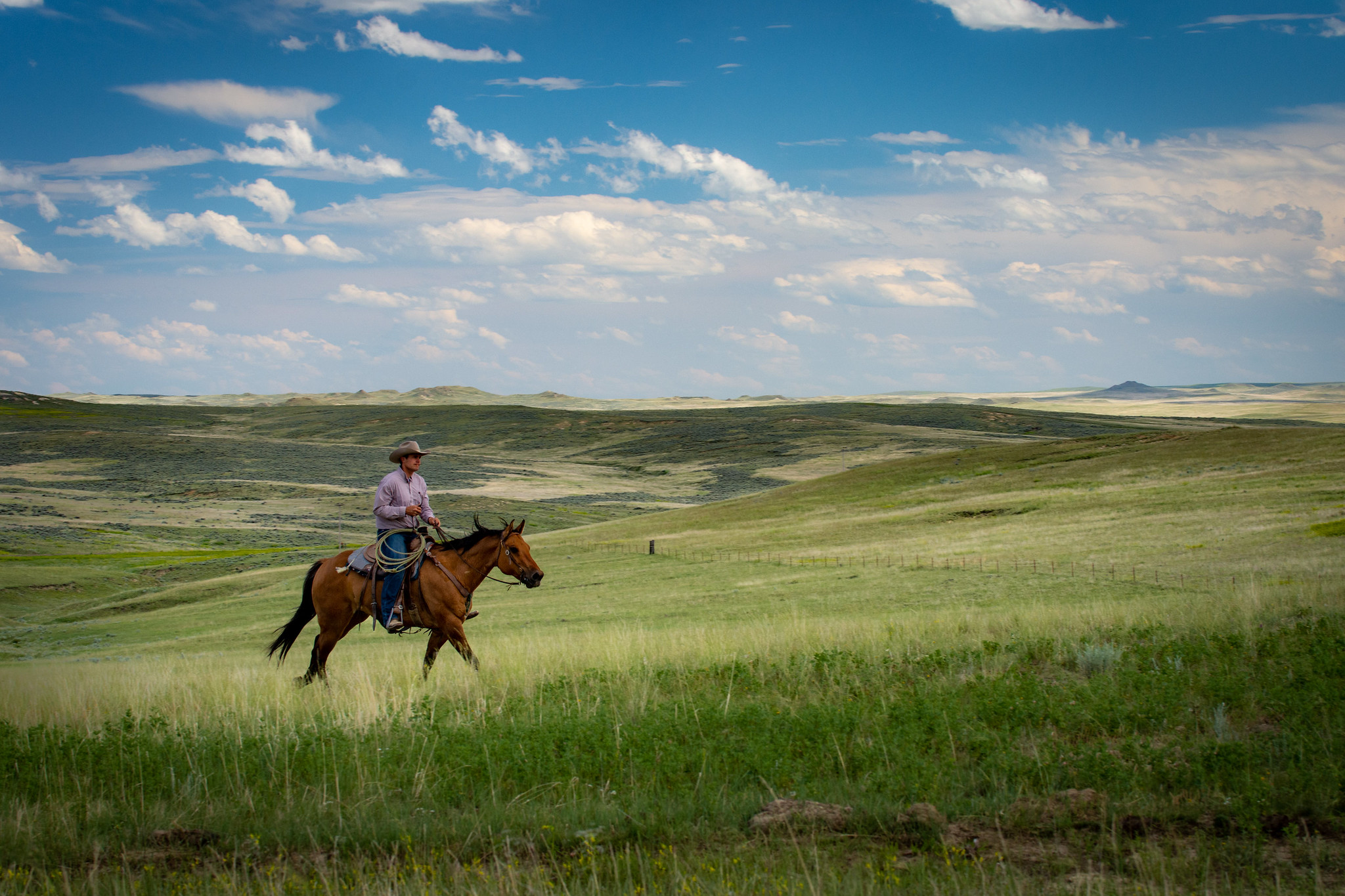Grazing Lands
 The impacts of climate change on grazing lands and the livestock operations that depend on them will vary by region, type of grazing land, vegetation community, and the type of livestock. These impacts are superimposed upon other factors such as land ownership, historical and current management, demographic changes and access to USDA programs.
The impacts of climate change on grazing lands and the livestock operations that depend on them will vary by region, type of grazing land, vegetation community, and the type of livestock. These impacts are superimposed upon other factors such as land ownership, historical and current management, demographic changes and access to USDA programs.
Rangelands cover an area of 405.8 million acres or 21% of the U.S. surface area. In the Western states, rangelands are predominantly Federally-owned lands, whereas over the Great Plains, rangelands are privately-owned. Pasturelands are also privately owned and cover 121.1 million acres (6% of the U.S. surface area); pasturelands are more common in the wetter half of the US, to the east of the 97th meridian. Rangelands and pasturelands are both used for grazing but the difference between the two is that rangelands support natural (and usually native) ecosystems while pasturelands are highly managed, cultivated systems.
Continue to the full text Grazing Lands in a Changing Climate or browse related content:
-
Wildfire Impacts on the Southern Plains
Between 2016 and 2018, the U.S. Department of Agriculture (USDA) Southern Plains Climate Hub led a project to assess…
-
Virtual Fencing: A Climate Adaptation Strategy
Virtual fencing allows ranchers to move livestock without physical fences and could be an effective climate adaptation…
-
Livestock Ranching, Rangelands, and Resilience: Ensuring Adaptive Capacity in an Increasingly Variable Climate
Beginning in 2018 and concluding in 2022, the USDA Northern Plains Climate Hub helped conduct a research and outreach…
-
Delmarva and the Ground for Change
A documentary film about three family-owned farming operations who are leaders in practices that promote healthy soils…
-
Agrivoltaics: Coming Soon to a Farm Near You?
Researchers and farmers around the country are currently experimenting and collecting data on what crops, pollinator…
-
Estimating rangeland grazing loss for the Noninsured Crop Disaster Assistance program: tools, challenges, solutions
The Southwest and Northern Plains Climate Hubs convened an online forum in June 2021, with FSA personnel and partners…
-
Northern Plains Grasslands Vulnerability Assessment
The Northern Plains Grasslands Vulnerability Assessment synthesizes the scientific literature about the vulnerability…
-
New Drought Monitoring Dashboard Addresses Ranchers’ Key Questions
A new Ranch Drought Monitoring Dashboard aims to provide information to help ranchers in the Great Plains and Southwest…
-
Keeping California Forests and Woodlands Healthy
The Healthy Forests briefs series, authored by the Science Advisory Panel of the California Governor’s Forest…










